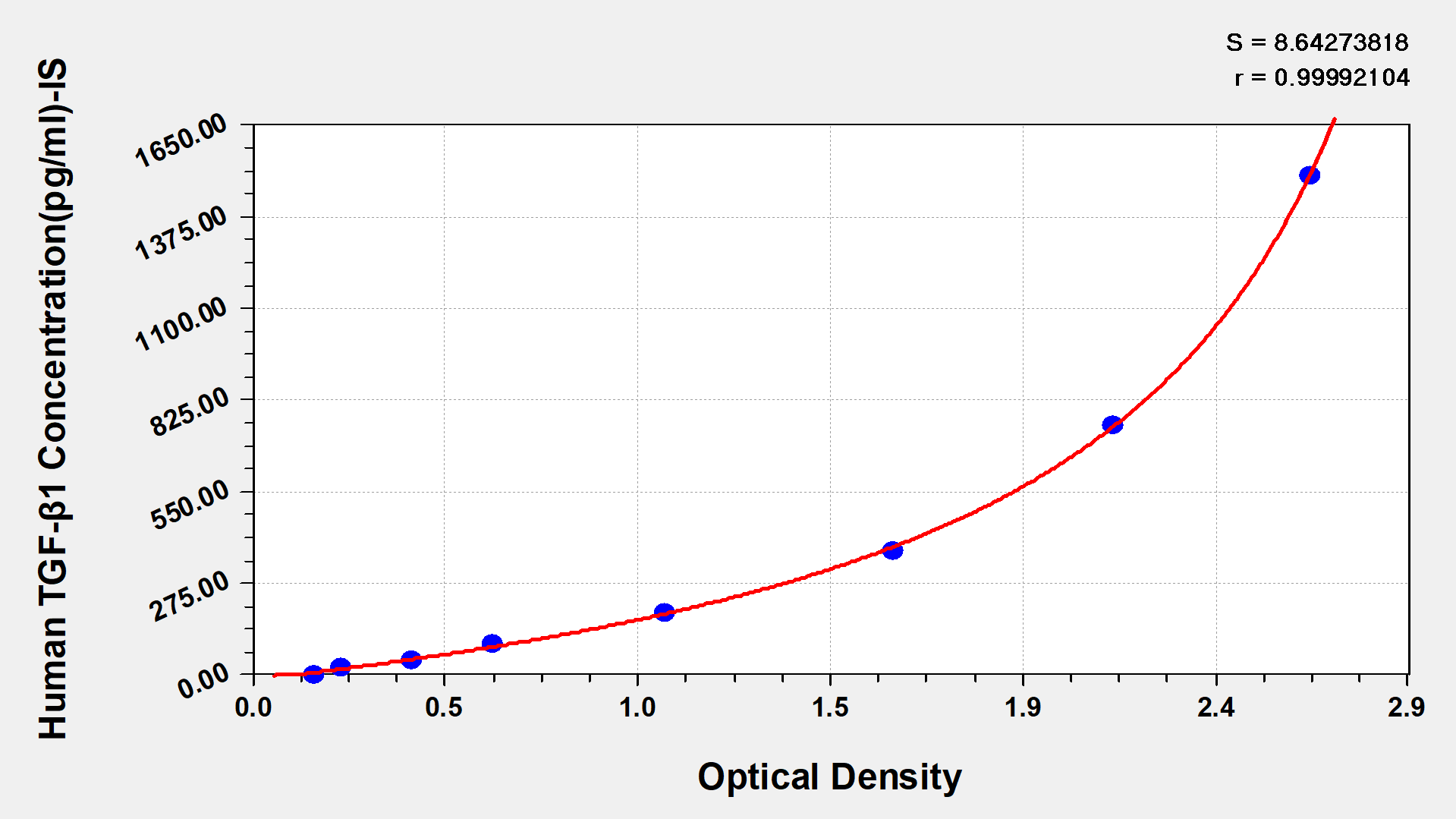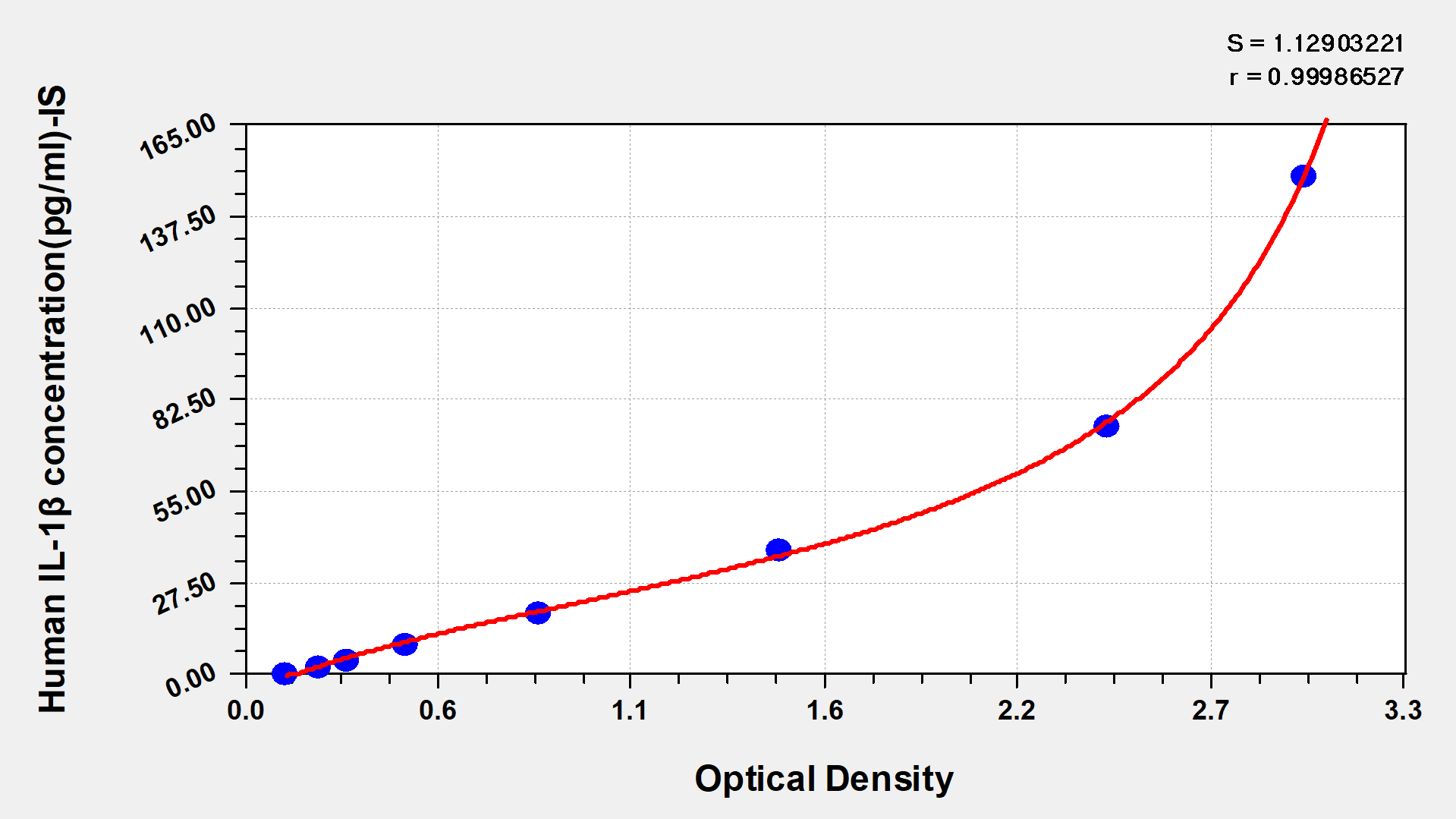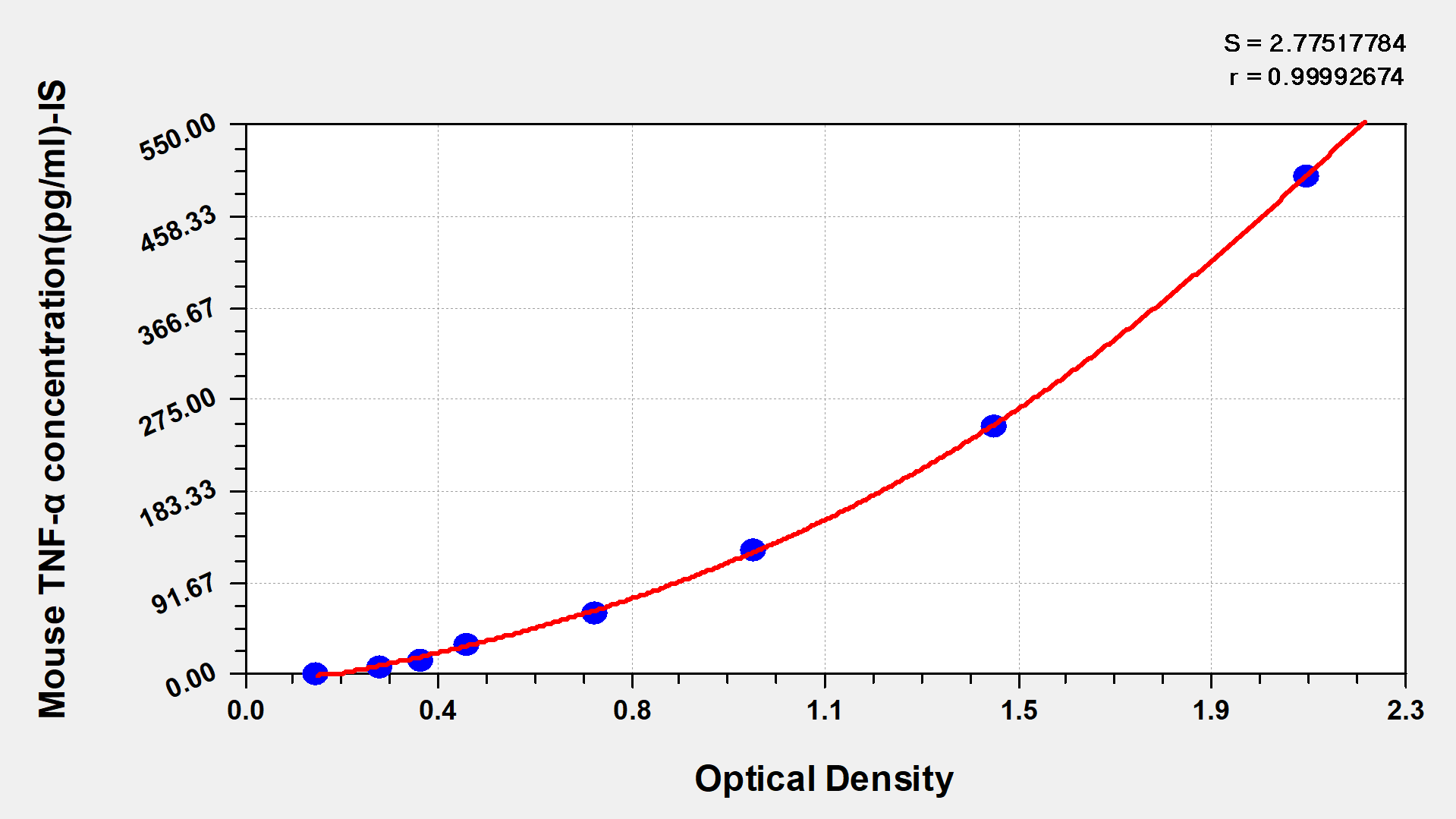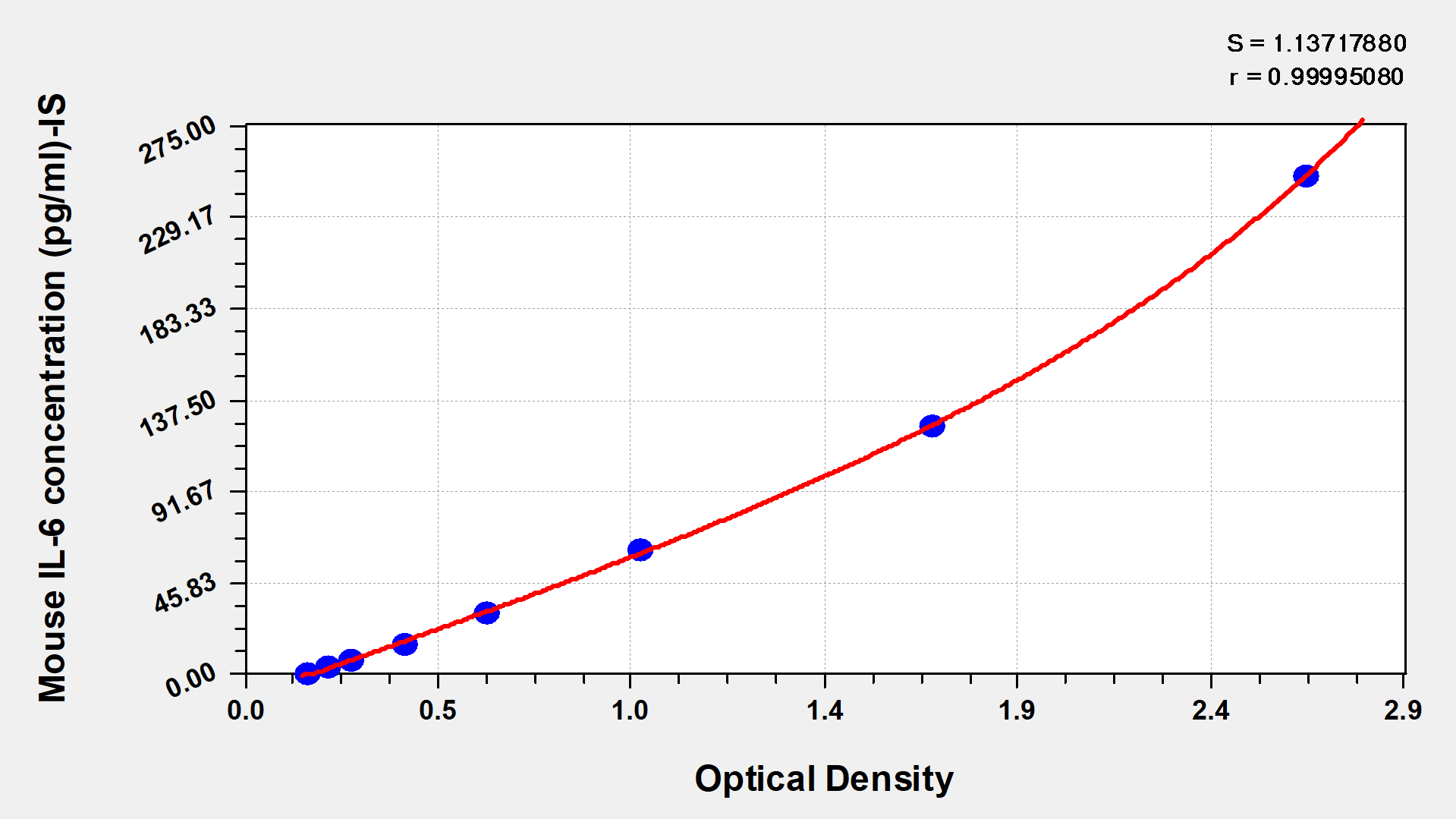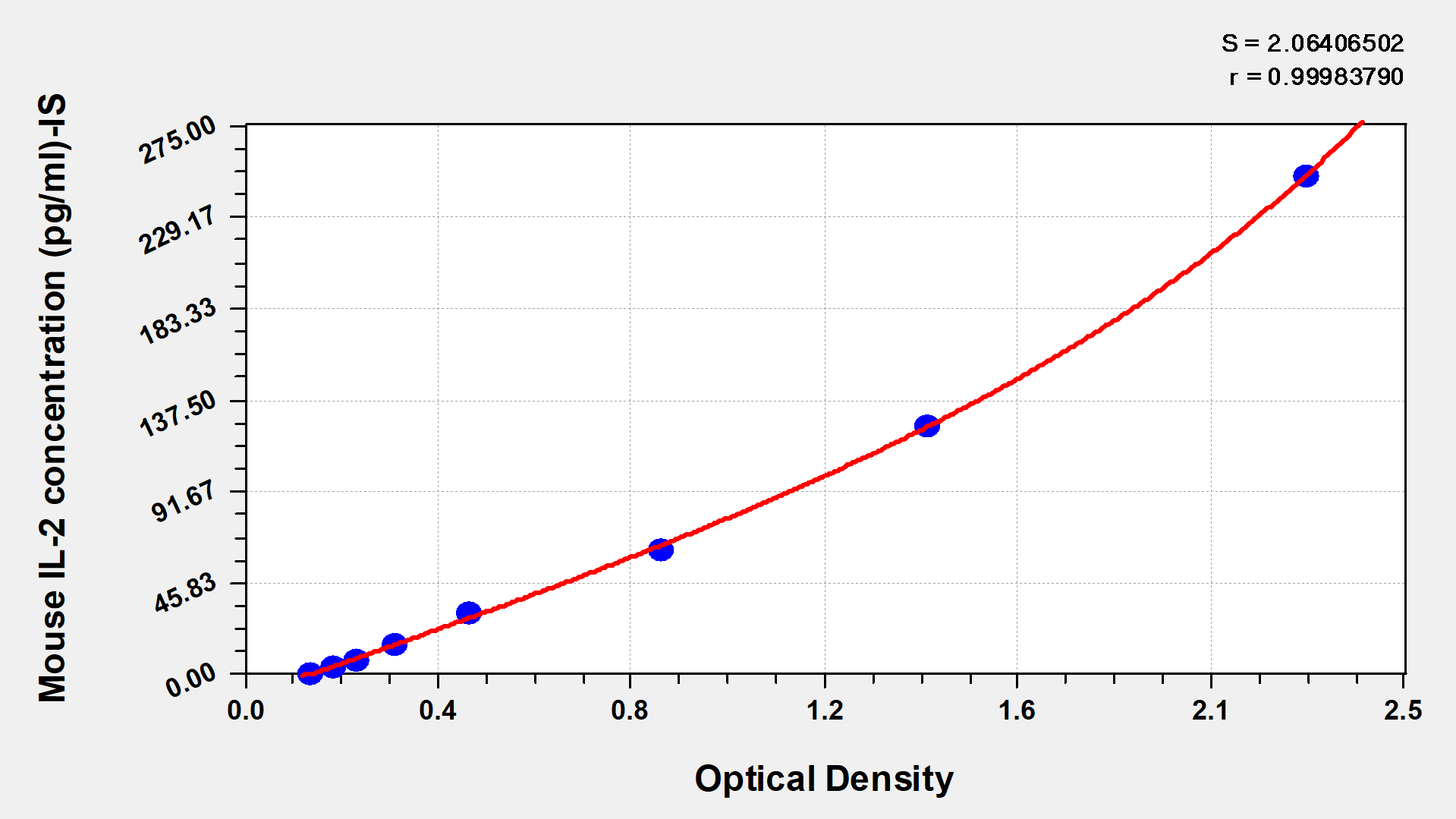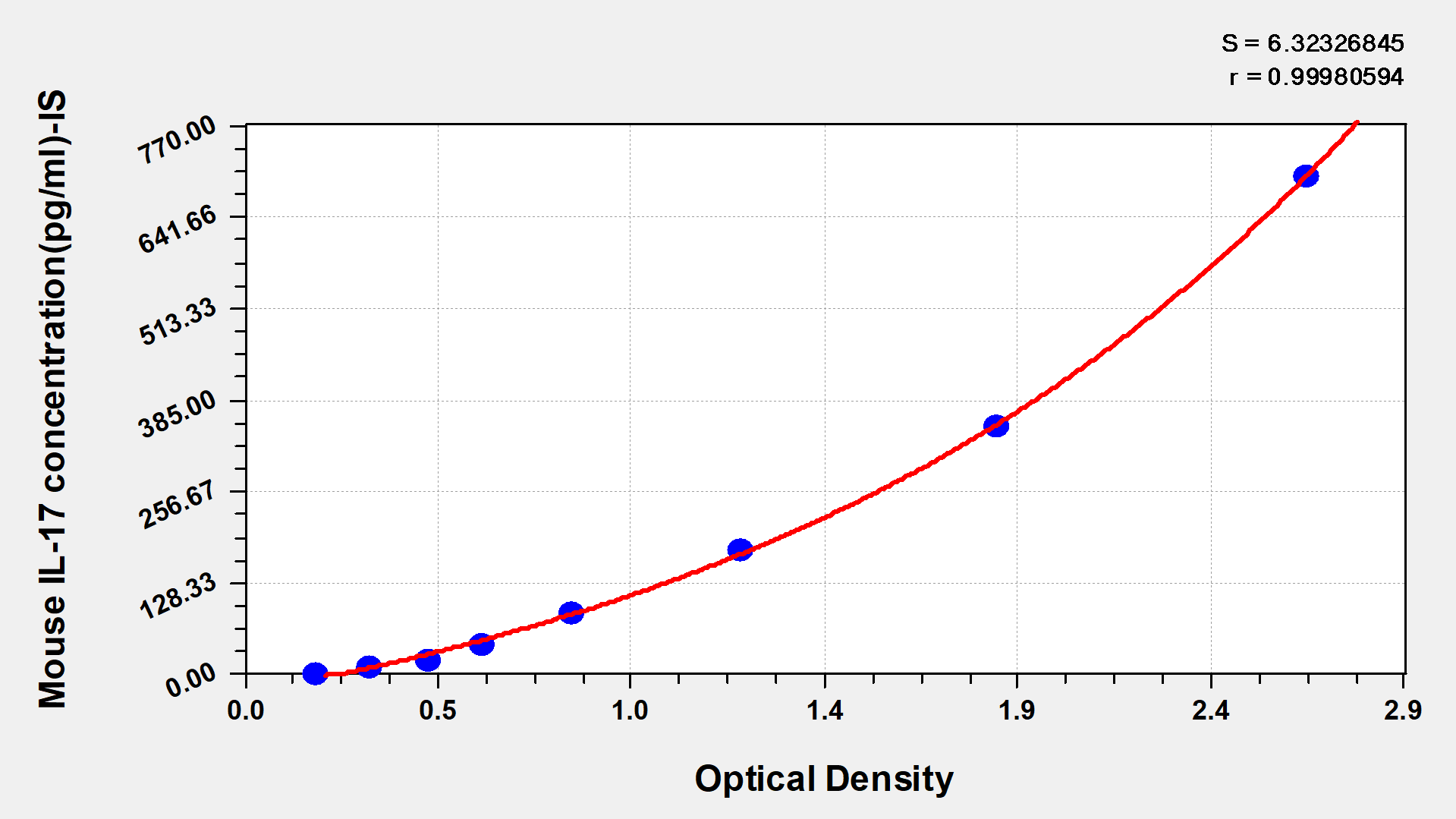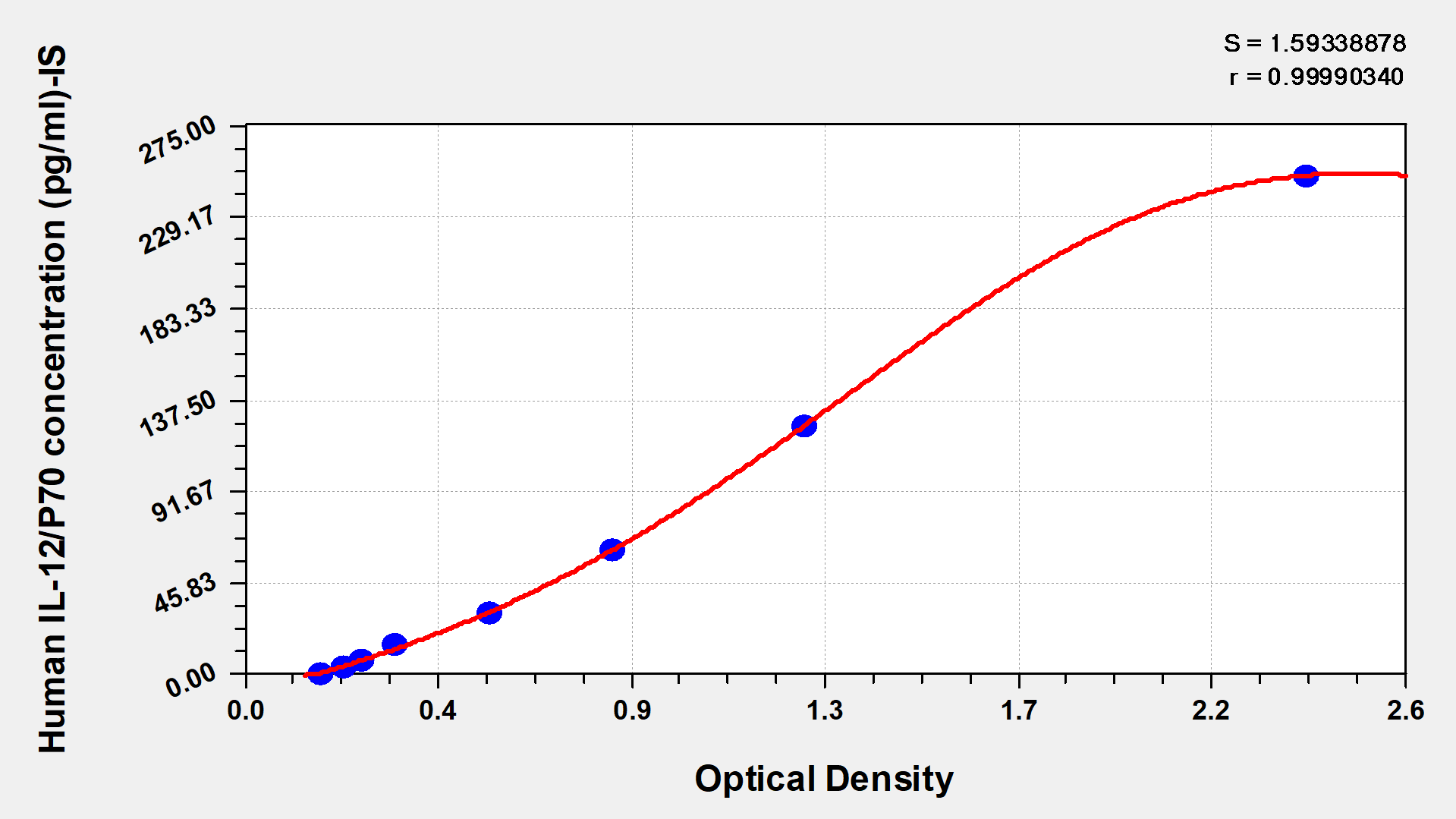Mouse Peptide YY(PYY) ELISA kit
-
中文名稱(chēng):小鼠多肽YY(PYY)酶聯(lián)免疫試劑盒
-
貨號(hào):CSB-EL019128MO
-
規(guī)格:96T/48T
-
價(jià)格:¥3600/¥2500
-
其他:
產(chǎn)品詳情
-
產(chǎn)品描述:小鼠多肽YY(PYY)酶聯(lián)免疫試劑盒(CSB-EL019128MO)為雙抗夾心法ELISA試劑盒,定量檢測(cè)血清、血漿、組織培養(yǎng)上清液、組織勻漿樣本中的PYY含量。試劑盒檢測(cè)范圍為94 pg/mL-6000 pg/mL,適用于胃腸道功能研究、代謝性疾病模型評(píng)估、藥物干預(yù)效果分析等科研場(chǎng)景,為探索能量代謝調(diào)控機(jī)制及靶向治療研究提供可靠工具本品僅用于科研,不用于臨床診斷,產(chǎn)品具體參數(shù)及操作步驟詳見(jiàn)產(chǎn)品說(shuō)明書(shū)。
-
別名:Pyy ELISA Kit; Peptide YY ELISA Kit; PYY ELISA Kit; Peptide tyrosine tyrosine) [Cleaved into: Peptide YY(3-36 ELISA Kit; PYY-II)] ELISA Kit
-
縮寫(xiě):
-
Uniprot No.:
-
種屬:Mus musculus (Mouse)
-
樣本類(lèi)型:serum, plasma, cell culture supernates, tissue homogenates
-
檢測(cè)范圍:94 pg/mL-6000 pg/mL
-
靈敏度:23.5 pg/mL
-
反應(yīng)時(shí)間:1-5h
-
樣本體積:50-100ul
-
檢測(cè)波長(zhǎng):450 nm
-
研究領(lǐng)域:Neuroscience
-
測(cè)定原理:quantitative
-
測(cè)定方法:Sandwich
-
精密度:
Intra-assay Precision (Precision within an assay): CV%<8% Three samples of known concentration were tested twenty times on one plate to assess. Inter-assay Precision (Precision between assays): CV%<10% Three samples of known concentration were tested in twenty assays to assess. -
線性度:
To assess the linearity of the assay, samples were spiked with high concentrations of mouse PYY in various matrices and diluted with the Sample Diluent to produce samples with values within the dynamic range of the assay. Sample Serum(n=4) 1:1 Average % 104 Range % 100-108 1:2 Average % 96 Range % 93-99 1:4 Average % 88 Range % 84-92 1:8 Average % 100 Range % 95-105 -
回收率:
The recovery of mouse PYY spiked to levels throughout the range of the assay in various matrices was evaluated. Samples were diluted prior to assay as directed in the Sample Preparation section. Sample Type Average % Recovery Range Serum (n=5) 98 94-102 EDTA plasma (n=4) 86 83-89 -
標(biāo)準(zhǔn)曲線:
These standard curves are provided for demonstration only. A standard curve should be generated for each set of samples assayed. 
pg/ml OD1 OD2 Average Corrected 6000 2.303 2.369 2.336 2.224 3000 1.606 1.658 1.632 1.520 1500 0.991 0.968 0.980 0.868 750 0.606 0.569 0.588 0.476 375 0.376 0.398 0.387 0.275 187.5 0.293 0.290 0.292 0.180 94 0.189 0.192 0.191 0.079 0 0.111 0.113 0.112 -
數(shù)據(jù)處理:
-
貨期:3-5 working days
引用文獻(xiàn)
- Lacticaseibacillus paracasei HP7 Improves Gastric Emptying by Modulating Digestive Factors in a Loperamide-Induced Functional Dyspepsia Mouse Model JW Jeong, D Lee, H Kim, H Gwon,Journal of Microbiology and Biotechnology,2025
- The role of gut microbiota in anorexia induced by T-2 toxin T Huang,Ecotoxicology and environmental safety,2024
- Fuzhuan brick tea attenuates high-fat diet-induced obesity and associated metabolic disorders by shaping gut microbiota Liu D, et al,Journal of Agricultural and Food Chemistry,2019
相關(guān)產(chǎn)品
靶點(diǎn)詳情
-
功能:This gut peptide inhibits exocrine pancreatic secretion, has a vasoconstrictory action and inhibitis jejunal and colonic mobility.
-
基因功能參考文獻(xiàn):
- Data show that peptide YY (PYY) mRNA levels were ~ 40,000-fold higher in mouse than human islets, suggesting a more important role of locally secreted Pyy in mouse islets. PMID: 29455414
- These results indicate that endogenous PYY has a hypoalgesic effect on somatic thermal and visceral chemical pain. The effect on visceral pain seems to be mediated by peripheral Y2 receptors. PMID: 28106168
- Study suggests that PYY3-36 mediated signalling via Y5 receptors may counteract the anorectic effects that it mediates via the Y2 receptor, consequently lowering bodyweight in the absence of Y5 signalling. PMID: 28485050
- expression of PYY and its NPY receptors on mouse islets and immortalised rodent and human beta-cells was examined. PMID: 27465830
- Angiotensin II stimulates PYY secretion, in turn inhibiting epithelial anion fluxes, thereby reducing net fluid secretion into the colonic lumen. PMID: 27447725
- new information on the cell specific localization of NUCB2/nesfatin-1 in the intestinal mucosa, and a novel function for nesfatin-1 in modulating intestinal CCK and PYY expression and secretion PMID: 26920055
- Data (including data from studies in transgenic mice) suggest neurotensin (Nts), glucagon-like peptide I (GLP-1), and peptide YY (Pyy) are closely co-expressed and co-secreted within enteroendocrine cells in ileum mucosa. PMID: 26469136
- pancreatic islet-derived PYY plays an important role in controlling glucose homeostasis through the modulation of beta-cell mass and function PMID: 26125465
- The patterns of colocalisation of the K cell marker, glucagon-like insulinotropic peptide, and the L cell markers, glucagon like peptide-1 and peptide YY, in enteroendocrine cells of the small intestine and colon of mouse and pig, were investigated. PMID: 25378285
- Glutamine stimulates the co-release of endogenous GLP-1 and PYY from mucosal L-cells resulting in paracrine GLP-1 and Y1 receptor-mediated electrogenic epithelial responses. PMID: 23992397
- Data suggest that an intestinal enteroendocrine cell line (STC-1) secrets PYY constitutively releasing PYY into cell culture media; linoleic acid and conjugated linoleic acid 9,11 are potent PYY secretagogues; most short-chain fatty acids are not. PMID: 22926626
- Suggest that PYY might be one critical mediator of deoxynivalenol-induced anorexia and, ultimately, growth suppression. PMID: 22903826
- gut peptide PYY is critical for the control of bone remodeling. PMID: 22792209
- a lineage of mature enteroendocrine cells have the ability to coexpress members of a group of functionally related peptides: CCK, secretin, GIP, GLP-1, PYY, and neurotensin PMID: 23064014
- PYY reduces food intake while enhancing lipogenic capacity and insulin action, likely contributing to fuel assimilation in the postprandial state. PMID: 22575886
- Data suggest that Pyy expression in hindbrain is regulated by nutritional factors and correlates with circulating PYY and leptin; Pyy decreases in acute starvation, prolonged caloric restriction, and after bariatric surgery (enterogastroanastomosis). PMID: 22761162
- PYY appears to regulate beta cell function and survival via the receptor Y(1/2). PMID: 22562022
- This study demonistrated that PYY has an important role in the regulation of olfactory neuron differentiation. PMID: 22354615
- dietary resistant starch is well tolerated, fermented in the colon, and stimulates colonic expression of proglucagon and PYY mRNA, and adiponectin protein in visceral fat. PMID: 22174009
- PYY(3-36) is also present in murine as well as in human saliva PMID: 22028819
- Gene expressions of ghrelin, PYY, and CCK was increased in the gastrointestinal tract of the hyperphagic intrauterine growth restriction rat offspring. PMID: 21264794
- PYY/PYY(3-36) potently inhibits basal and stress/serotonin/cholinergic-stimulated propulsive colonic motor function in conscious mice, likely via Y(2) receptors PMID: 19892938
- Langerhans cells and a certain BALB/c and A/J mice epidermis-derived dendritic cell line contain mRNA for peptide yy PMID: 12372697
- targeted disruption of the peptide YY gene does not perturb terminal endocrine cell differentiation or the control of food intake and energy homeostasis PMID: 15870288
- Data show that the sustained inhibition of gastric secretion due to tumours producing PYY/enteroglucagon in transgenic mice is associated with an increase in AQP4 expression and a down-regulation of H(+)/K(+)-ATPase in parietal cells. PMID: 15898955
- Reduced expression in gastrin-cholecystokinin knockout mice. PMID: 16002530
- reduced PYY levels may predispose to the development of obesity, particularly with ageing or under conditions of high-fat feeding, as demonstrated in peptie YY-deficient mice. PMID: 16680491
- We generated Pyy null mice, which were selectively resistant to the satiating and weight-reducing effects of protein and developed marked obesity that was reversed by exogenous PYY treatment. PMID: 16950139
- that PYY may be a mediator of islet cell development, as well as a cofactor for growth factor responses, not only during fetal pancreas formation but also during regeneration in adult mice. PMID: 17185798
- Overexpression of PYY by transgenic technique, chronic administration of PYY into normal pregnant mice, or deletion of the PYY Y1 receptor produced neural tube defects. PMID: 17400914
- Diet-induced obese mice had low plasma PYY, which may have caused compensatory up-regulation of PYY and Y2 receptor densities in medulla. PMID: 17615145
- Endogenous PYY plays a critical role in regulating bone mass. In comparison, its role in regulating body weight is minor and is confined to situations of high-fat feeding. PMID: 17920065
- Activation of neurons in the nucleus of the solitary tract following administration of T2R agonists to the GI tract involves CCK(1) and Y(2) receptors located on vagal afferent terminals in the gut wall. PMID: 18003792
- PYY-immunoreactive (ir) cell bodies were localized exclusively to the gigantocellular reticular nucleus (Gi) of the rostral medulla. The highest density of PYY fibers was present within the solitary tract nucleus. PMID: 18022952
- there was no effect of PYY transgenic over expression on basal or fasting-induced food intake PMID: 18164057
顯示更多
收起更多
-
亞細(xì)胞定位:Secreted.
-
蛋白家族:NPY family
-
數(shù)據(jù)庫(kù)鏈接:
Most popular with customers
-
Human Transforming Growth factor β1,TGF-β1 ELISA kit
Detect Range: 23.5 pg/ml-1500 pg/ml
Sensitivity: 5.8 pg/ml
-
-
-
Mouse Tumor necrosis factor α,TNF-α ELISA Kit
Detect Range: 7.8 pg/ml-500 pg/ml
Sensitivity: 1.95 pg/ml
-
-
-
-



